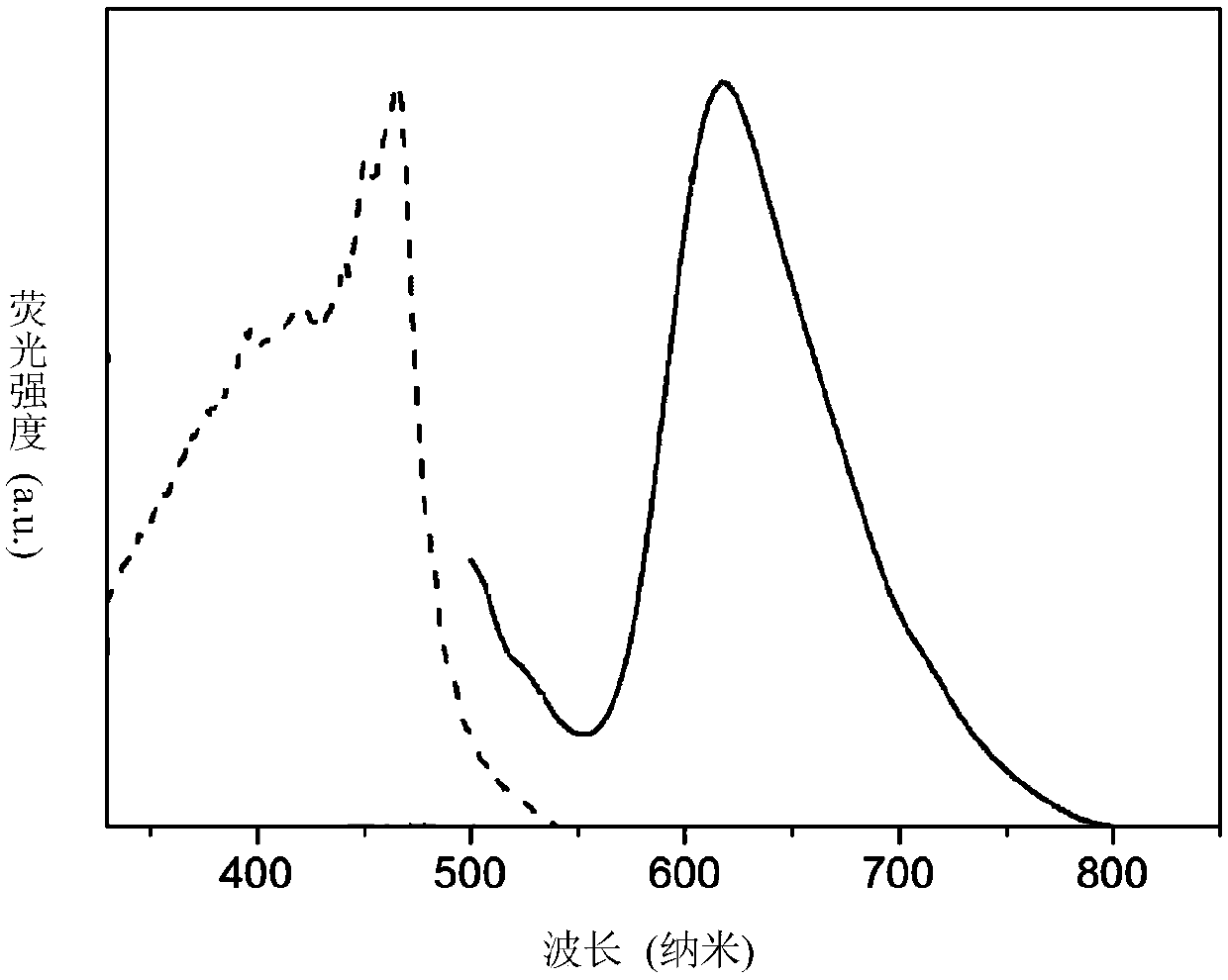Novel AIE (Aggregation Induced Emission) red fluorescent dye
A red-light fluorescence and AIE technology, applied in the field of red-light fluorescent dyes, can solve problems such as no light emission and weak light emission that affect wide application, achieve strong penetrating power, simple synthesis route, and avoid cell self-absorption and autofluorescence interference effect
- Summary
- Abstract
- Description
- Claims
- Application Information
AI Technical Summary
Problems solved by technology
Method used
Image
Examples
Embodiment 1
[0020] Embodiment 1: the synthesis of dyestuff
[0021] Dissolve 272mg of compound 1 in 10mL of methanol, add 150mg of 40% glyoxal, react at room temperature for 12 hours, and observe that a yellow precipitate is formed in the system; filter the yellow precipitate, wash the precipitate three times with 50mL of ethanol, and obtain 213mg of a yellow powdery solid, namely It is the product dye 1 with a yield of 72.45%. HRMS(ESI) m / z: calcd for [M+1]+, 295.110; found, 295.119. 1 H NMR (400MHz, DMSO-d 6 )δ10.99(s,2H), 8.97(s,2H),8.54(s,2H),7.76(dd,J=7.7,1.5Hz,2H),7.57–7.24(m,2H),6.98(t ,J=7.8Hz, 4H). 13 C NMR (400MHz, CDCl 3 ) 168.01, 160.55, 159.99, 134.35, 133.23, 119.96, 117.46.
Embodiment 2
[0022] Embodiment 2: The present invention: cell imaging of fluorescent dyes
[0023] Dissolve the dye in DMSO solution to make 2.0 × 10 -5 mol / L solution, add 2 μL of the above solution into 2 mL of cell culture medium, and use this as a culture medium to culture HeLa cells at 37°C for 1 hour. Through a laser confocal scanning microscope, use 425nm as an excitation wavelength under the red light channel. It is observed that there is a strong signal in the liposome of the cell, indicating that the probe can be selectively aggregated in the liposome to generate fluorescence, which can be used for imaging and has high selectivity.
PUM
 Login to View More
Login to View More Abstract
Description
Claims
Application Information
 Login to View More
Login to View More - R&D
- Intellectual Property
- Life Sciences
- Materials
- Tech Scout
- Unparalleled Data Quality
- Higher Quality Content
- 60% Fewer Hallucinations
Browse by: Latest US Patents, China's latest patents, Technical Efficacy Thesaurus, Application Domain, Technology Topic, Popular Technical Reports.
© 2025 PatSnap. All rights reserved.Legal|Privacy policy|Modern Slavery Act Transparency Statement|Sitemap|About US| Contact US: help@patsnap.com



